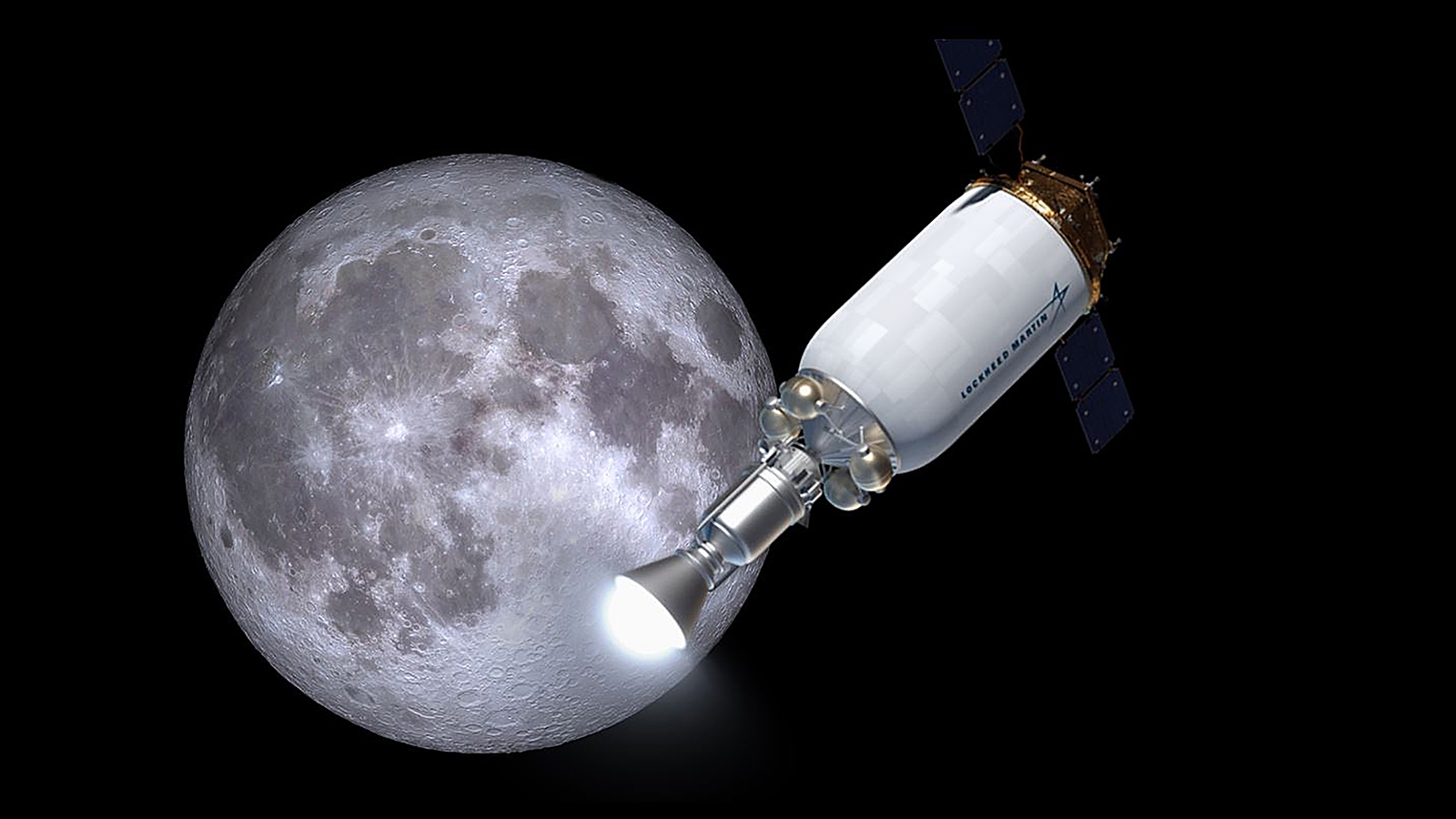
Stay Up to Date
Submit your email address to receive the latest industry and Aerospace America news.

One analysis suggests a narrower advantage over conventional rockets for in-space propulsion
The performance claims made by NASA last week when it announced it has joined forces with DARPA to build and test a nuclear rocket in space are drawing words of caution from two experts who have conducted an in-depth analysis of the efficiency and speed of conventional versus nuclear rockets.
Proponents of nuclear thermal propulsion, NTP, say that turning liquid hydrogen into a superheated gas with a fission reactor and accelerating it out a nozzle will improve fuel efficiency by two to five times compared to burning hydrogen in a chemical engine.
“With the help of this propulsion system, astronauts will be able to journey to and from deep space faster than ever,” said NASA Administrator Bill Nelson when announcing the interagency agreement on Jan. 24 at AIAA’s SciTech Forum in Maryland.
In the view of proponents, the higher efficiency of nuclear thermal engines means they can run longer and propel a spacecraft to higher velocities, even if the thrust is the same.
Greg Meholic and Jeff Laube, senior project managers at the federally funded Aerospace Corporation, have produced an analysis that questions the high end of that efficiency claim. They presented their findings at the Joint Army-Navy-NASA-Air Force Interagency Propulsion Committee meeting in December.
They are quick to say that this analysis does not mean that they are opponents of nuclear propulsion. “We’re trying to be precise with our words to manage expectations,” says Laube.
As a baseline, they point to the conventional RL10 engine, one of which was fired in space to boost an uncrewed Orion capsule around the moon in last year’s Artemis I mission, the debut of NASA’s Space Launch System rockets.
The RL10 and a future NTP engine will each produce about 111,200 newtons of thrust. But an NTP engine needs only one propellant, hydrogen, and its internal temperatures sometimes reach 2,700 degrees Celsius. Because hydrogen is very light and the reactor very hot, an NTP engine can more efficiently convert heat into propulsive force over time, using less propellant per unit of force. This relationship between thrust and how much fuel is consumed over time, the specific impulse of an engine, is measured in seconds.
An NTP engine is unlikely to ever reach four to five times the efficiency of an RL-10, according to the analysis by Meholic and Laube. An RL-10 hits around 450 seconds, they say. The engine whose development NASA will lead for DARPA’s Demonstration Rocket for Agile Cislunar Operations, or DRACO, is targeting 900 seconds — twice, rather than five times, as efficient.
As for the speed: “It’s a generalized misperception that because the engine is more efficient, it’s faster, it’s lighter and it’s smaller,” Meholic says. Consider the power train of a Toyota Prius. It’s twice as efficient as the power train of a gasoline engine, but the power train isn’t any lighter or smaller for the same power, and the Prius “doesn’t go any faster,” Meholic says.
A fully developed NTP engine could provide somewhat faster travel times to Mars — shaving off perhaps a month, according to Laube — or indeed push 30% to 40% more mass to the red planet. But one cannot just plug an NTP engine onto a spacecraft in place of a chemical rocket and achieve such performance gains, they caution.
While it’s true that there’s no need to lug along the liquid oxygen that a conventional engine requires for combustion, sometimes overlooked is the fact that an NTP engine needs three times as much hydrogen to create the same propulsive force, and, therefore, a much bigger tank is required with all the insulation and cryogenic hydrogen management that comes with that, Meholic says. The reason for this, he explains, is that the lightness of hydrogen, while aiding efficiency, also means more must be expelled to generate the same overall thrust as a chemical engine.
Also, in cislunar space applications, chemical rockets might outperform NTP versions when maneuverability is mission critical, according to Meholic. Conventional engines can provide instant thrust, whereas an NTP needs 30 seconds to ramp up, and about 60 seconds to ramp down, he says.
None of which is to say that NTP research is a bad idea. “What we’re just trying to do is manage the expectations of what people can expect it to perform like,” Meholic says. “The kinds of things like, ‘Wow, no one told us our tank would need to be three times the size.’”
DRACO is the most serious effort to date to pick up technology explored throughout the 1950s, ’60s and ’70s under NASA’s Nuclear Engine for Rocket Vehicle Applications, or NERVA, program. NERVA never flew, so DRACO’s demonstrator would provide first-of-its-kind data that could help technologists better predict what performance NTP technologies are capable of.
“We’ve been talking about this forever. We have some test data from over half a century ago. It’s time to put it all together, and DRACO is that first step,” Laube says. “OK, here’s a tank, here’s hydrogen, here’s the reactor; let’s get it up, power it up and go.”
RELATED READING: Nuclear Rocket Redux — The U.S. has revived its nuclear propulsion research. Can it succeed this time?
About jon kelvey
Jon previously covered space for The Independent in the U.K. His work has appeared in Air and Space Smithsonian, Slate and the Washington Post. He is based in Maryland.
Related Posts
Stay Up to Date
Submit your email address to receive the latest industry and Aerospace America news.



